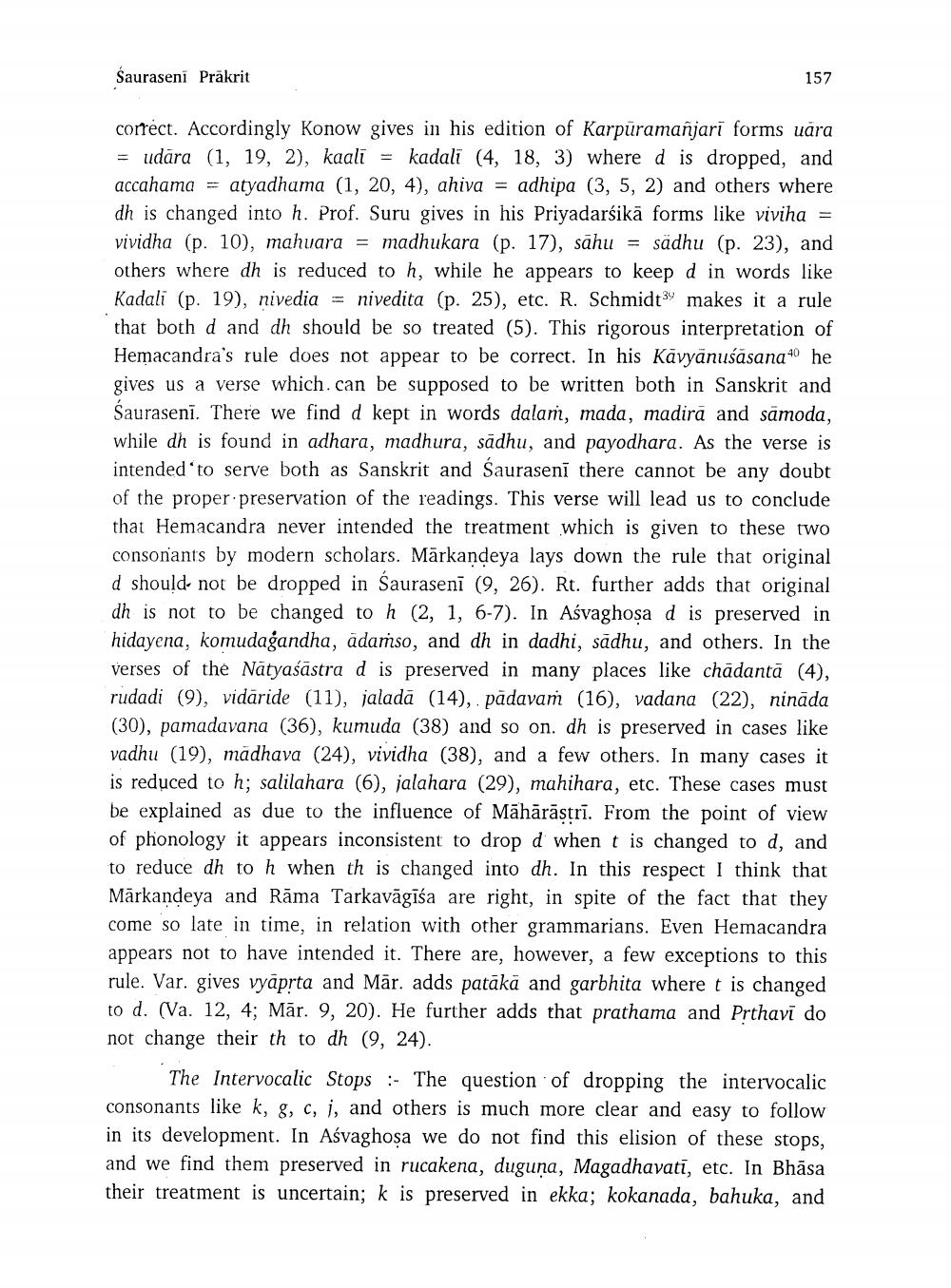________________
Sauraseni Prăkrit
157
correct. Accordingly Konow gives in his edition of Karpūramanjari forms uara = udāra (1, 19, 2), kaali = kadali (4, 18, 3) where d is dropped, and accahama = atyadhama (1, 20, 4), ahiva = adhipa (3, 5, 2) and others where dh is changed into h. Prof. Suru gives in his Priyadarsikā forms like viviha = vividha (p. 10), mahuara = madhukara (p. 17), sāhu = sadhu (p. 23), and others where dh is reduced to h, while he appears to keep d in words like Kadali (p. 19), nivedia = nivedita (p. 25), etc. R. Schmidt3% makes it a rule that both d and dh should be so treated (5). This rigorous interpretation of Hemacandra's rule does not appear to be correct. In his Kavyānusāsana 40 he gives us a verse which can be supposed to be written both in Sanskrit and Saurasenī. There we find d kept in words dalam, mada, madirā and sāmoda, while dh is found in adhara, madhura, sādhu, and payodhara. As the verse is intended to serve both as Sanskrit and Saurasenī there cannot be any doubt of the proper preservation of the readings. This verse will lead us to conclude that Hemacandra never intended the treatment which is given to these two consonants by modern scholars. Mārkandeya lays down the rule that original d should not be dropped in Sauraseni (9, 26). Rt. further adds that original dh is not to be changed to h (2, 1, 6-7). In Aśvaghosa d is preserved in hidayena, komudagandha, ādamso, and dh in dadhi, sadhu, and others. In the verses of the Natyaśāstra d is preserved in many places like chādantā (4), rudadi (9), vidāride (11), jaladā (14), pādavam (16), vadana (22), ninada (30), pamadavana (36), kumuda (38) and so on. dh is preserved in cases like vadhu (19), madhava (24), vividha (38), and a few others. In many cases it is reduced to h; salilahara (6), jalahara (29), mahihara, etc. These cases must be explained as due to the influence of Māhārāstrī. From the point of view of phonology it appears inconsistent to drop d when t is changed to d, and to reduce dh to h when this changed into dh. In this respect I think that Mārkandeya and Rāma Tarkavāgīša are right, in spite of the fact that they come so late in time, in relation with other grammarians. Even Hemacandra appears not to have intended it. There are, however, a few exceptions to this rule. Var. gives vyāprta and Mār. adds patākā and garbhita where t is changed to d. (Va. 12, 4; Mār. 9, 20). He further adds that prathama and Prthavi do not change their th to dh (9, 24).
The Intervocalic Stops :- The question of dropping the intervocalic consonants like k, g, c, j, and others is much more clear and easy to follow in its development. In Asvaghosa we do not find this elision of these stops, and we find them preserved in rucakena, duguna, Magadhavati, etc. In Bhāsa their treatment is uncertain; k is preserved in ekka; kokanada, bahuka, and




